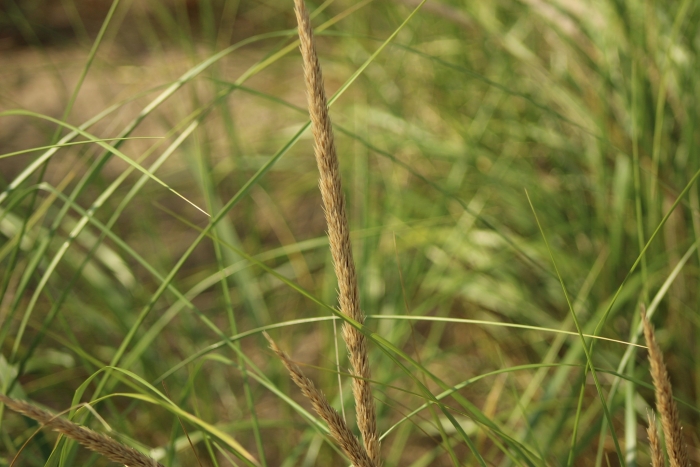American Beach Grass
(Ammophila breviligulata)
American Beach Grass (Ammophila breviligulata)
/
/

Isaac Krone
CC BY 4.0
Image By:
Isaac Krone
Recorded By:
Copyright:
CC BY 4.0
Copyright Notice:
Photo by: Isaac Krone | License Type: CC BY 4.0 | License URL: http://creativecommons.org/licenses/by/4.0/ | Rights Holder: Isaac Krone | Publisher: iNaturalist | Date Created: 2016-10-05T10:24:28-07:00 |

















































Estimated Native Range
Summary
Ammophila breviligulata, commonly known as American Beach Grass, is a perennial grass native to coastal dune systems along the Atlantic Ocean and the Great Lakes in North America. This species is adapted to open, sandy environments where it plays a crucial role in dune stabilization. It typically grows to a height of 2-3 feet (0.6-0.9 meters) and produces an extensive rhizome system that helps to bind the sand and resist erosion. The inflorescence of American Beach Grass is a spike-like panicle up to 10 inches (25 cm) long, with a single-flowered spikelet. Seed heads become prominent in late July or August, and the species name ’breviligulata’ refers to the short ligule, a feature of the grass leaves.
American Beach Grass is valued for its ability to stabilize sandy soils and is often used in coastal restoration projects to prevent erosion. It is also used in landscaping for its hardiness and low maintenance, especially in areas with poor, sandy soils. In cultivation, it requires full sun and can tolerate drought, salt spray, and nutrient-poor soils. While it is a beneficial plant in its native habitat, Ammophila breviligulata can become invasive outside of its native range, so it is important to check local regulations before planting.CC BY-SA 4.0
American Beach Grass is valued for its ability to stabilize sandy soils and is often used in coastal restoration projects to prevent erosion. It is also used in landscaping for its hardiness and low maintenance, especially in areas with poor, sandy soils. In cultivation, it requires full sun and can tolerate drought, salt spray, and nutrient-poor soils. While it is a beneficial plant in its native habitat, Ammophila breviligulata can become invasive outside of its native range, so it is important to check local regulations before planting.CC BY-SA 4.0
Plant Description
- Plant Type: Grass
- Height: 2-3 feet
- Width: 2-3 feet
- Growth Rate: Rapid
- Flower Color: N/A
- Flowering Season: Spring
- Leaf Retention: Evergreen
Growth Requirements
- Sun: Full Sun
- Water: Medium
- Drainage: Fast
Common Uses
Bird Garden, Drought Tolerant, Erosion Control, Low Maintenance, Salt Tolerant
Natural Habitat
Coastal dune systems along the Atlantic Ocean and the Great Lakes
Other Names
Common Names: American Beachgrass
Scientific Names: , Ammophila breviligulata, Calamagrostis breviligulata, Ammophila breviligulata subsp. breviligulata, Ammophila arenaria var. breviligulata, Ammophila arenaria subsp. breviligulata, Calamagrostis breviligulata subsp. breviligulata,
GBIF Accepted Name: Ammophila breviligulata Fernald